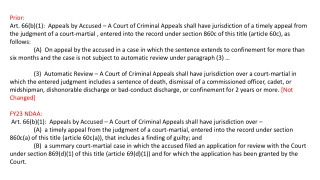Guide to Oral Arguments in Trial Court
Learn how to conduct oral arguments in a trial court, including the steps for both the movant and respondent, strategies for making strong arguments, and tips for responding effectively. This comprehensive guide covers the dos and don'ts of oral arguments, emphasizing the importance of preparation, clarity, and responsiveness during court proceedings.
Download Presentation

Please find below an Image/Link to download the presentation.
The content on the website is provided AS IS for your information and personal use only. It may not be sold, licensed, or shared on other websites without obtaining consent from the author.If you encounter any issues during the download, it is possible that the publisher has removed the file from their server.
You are allowed to download the files provided on this website for personal or commercial use, subject to the condition that they are used lawfully. All files are the property of their respective owners.
The content on the website is provided AS IS for your information and personal use only. It may not be sold, licensed, or shared on other websites without obtaining consent from the author.
E N D
Presentation Transcript
Advocacy ORAL ARGUMENTS IN THE TRIAL COURT
How to do an oral argument in the trial court All parties approach the bench when the case is called Attorneys introduce themselves and identify their client, Movant, party who brought the motion, takes the lead Respondent follows Less formal than an appellate argument no need to state may it please the court No formal time for each side no clock Relatively short about 5-10 minutes total.
How to make the argument -- Movant After all attorneys and parties have been identified for the record, Movant tells the court: What the relief sought in the motion, gives relevant background facts and/or procedure, and Reasons why the motion should be granted Briefly roadmap the issue or issues Make your strongest argument based on legal principles Identify authority, if asked or particularly relevant Expect questions from the bench Listen carefully to the question may be on weak area of law, or on the facts, or a softball Answer the question directly Don t cut off the judge
Respondent opposition only Wait for the Movant to finish don t interrupt If you are responding to the Motion: Once the Movant finishes, begin your argument (no need to re-introduce yourself) Begin with a roadmap of the reasons why the motion should be denied State your strongest rebuttal argument either fact or law -- first Be prepared to explain why the facts or law prohibit the granting of the motion Expect questions from the court Listen carefully to the question on weak area of law, or on the facts, or a softball Answer the question directly Don t cut off the judge
How to respond to an argument respondent Decide on the one or two arguments that will defeat the motion oFocus on the outcome-determinative legal principles and facts that counter the movant s theory Don t make your argument confusing by talking about tangential legal principles or facts oSynthesize: explain the legal principles that govern the case Organization: oDecide whether you want to start argument without reference to movant s argument, OR oRespond to movant s argument point by point Answer the judge s questions Clear up any doubt or misunderstanding in the judge s view
Answering questions from the judge Usually questions fall into these categories: Questions that seek information Questions that advance the argument Questions that reveal troubling issues Adversarial questions Friendly questions Collateral questions Prepare for each type!
Tip: Welcome questions from the court Questions from the court are an indication of what the court is concerned with Listen to the questions! Answer the judge s question immediately Do NOT say, I will get to that later that is not helpful Don t worry if you are not following your outline, you can go back to it after you answer If the judge starts talking, immediately stop what you are saying Make eye contact with the judge Otherwise you may miss a question
Tip: Disagreement is okay Do not worry about pointing out to a judge a flaw in an argument Judges are not offended by disagreement, as long as the point is made in a respectful manner Judges want to make correct decisions and want to know if a case has been misapplied, a statute has been overlooked, the latest authority has not been considered, etc. Judges don t want to be reversed by the appellate court
Etiquette in the trial court Remember, in the trial court, the judge controls the courtroom Judge decides when your argument is over Don t interrupt the judge Don t cut off a question (even if you know the answer and the question seems never-ending) Don t give the impression that a question is irrelevant or unimportant Talk to the judge, not to your opponent Argument is directed to the judge Do not interrupt your opponent (even if, especially if, you think he said something wrong/false/disputed)

 undefined
undefined
























